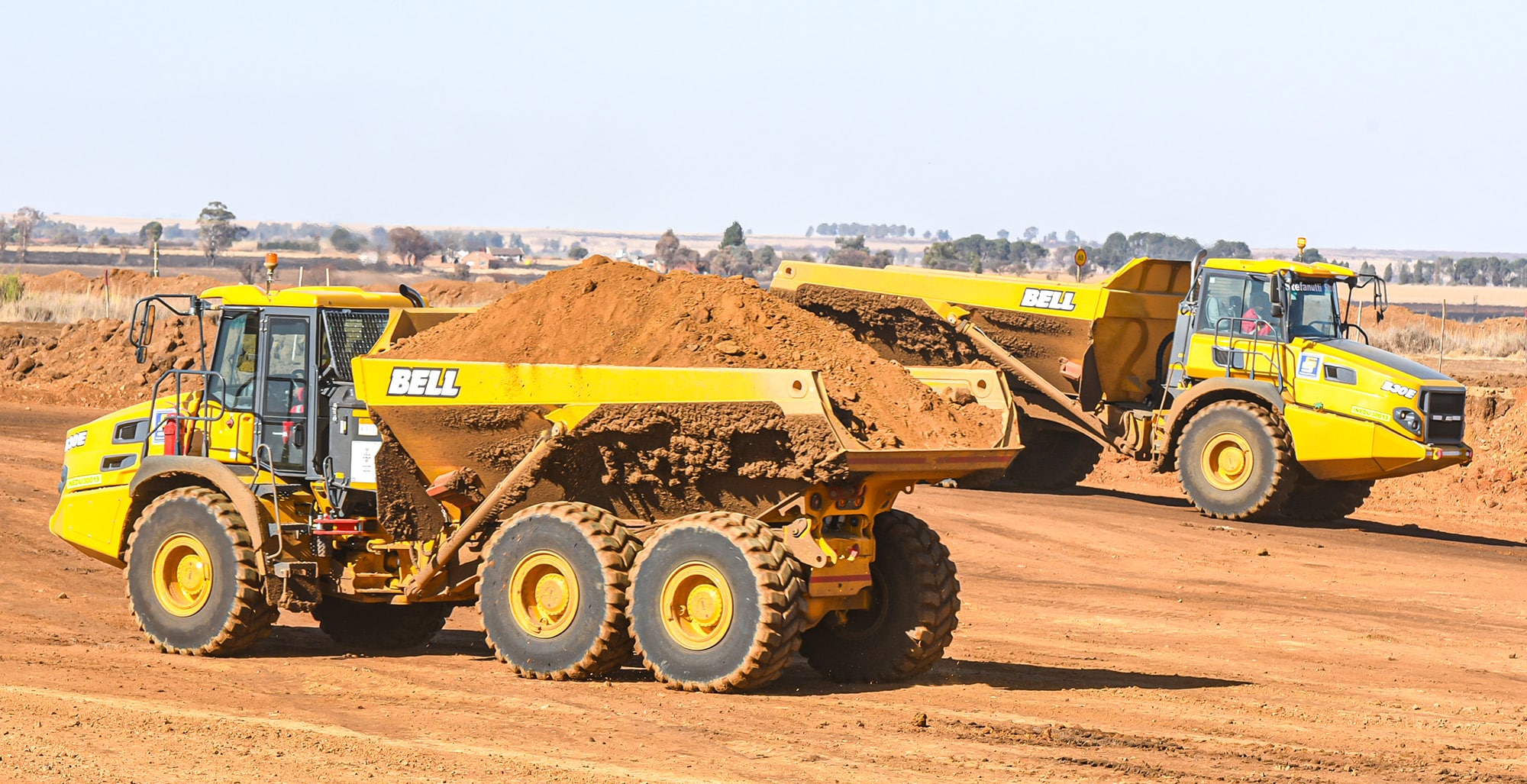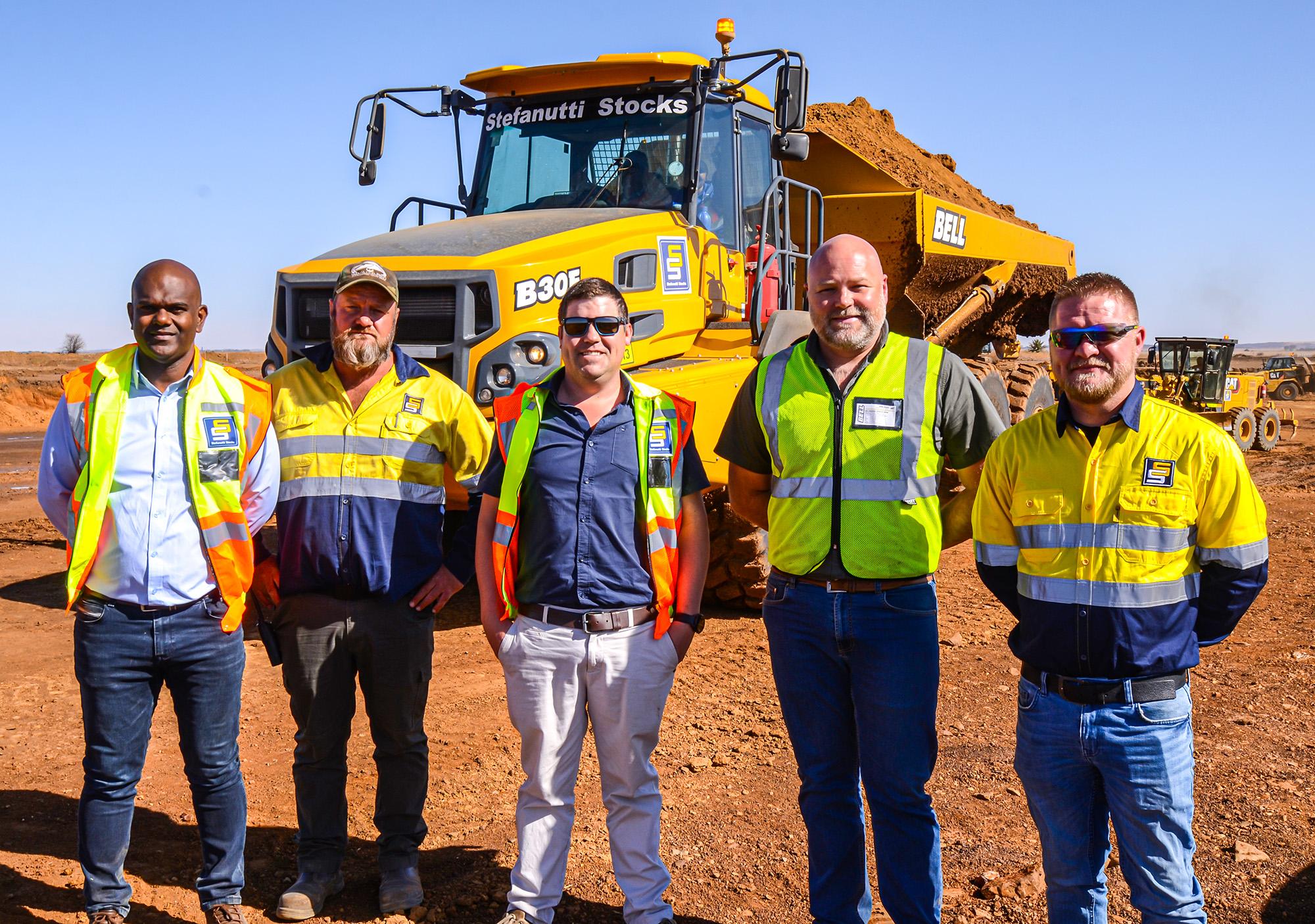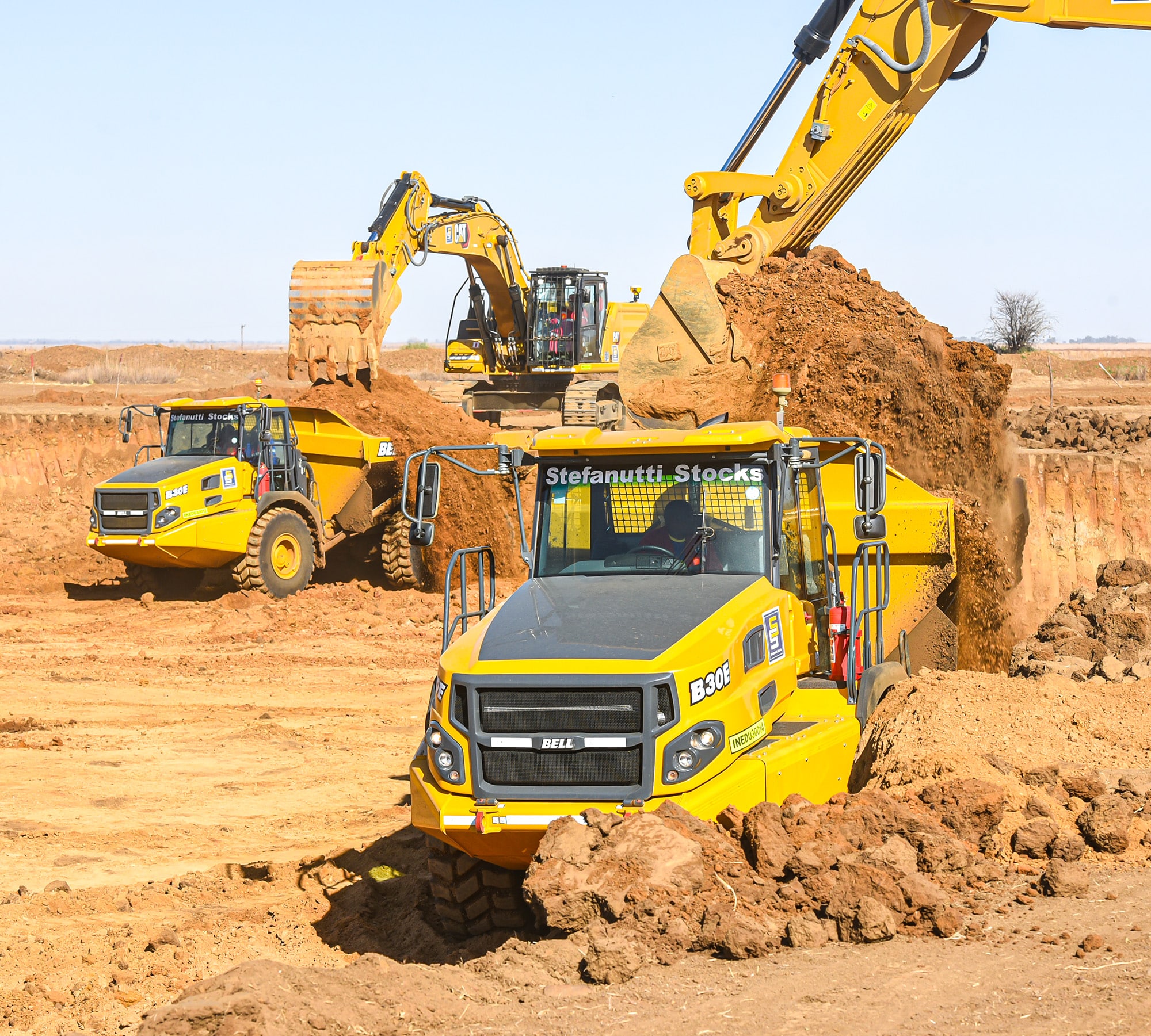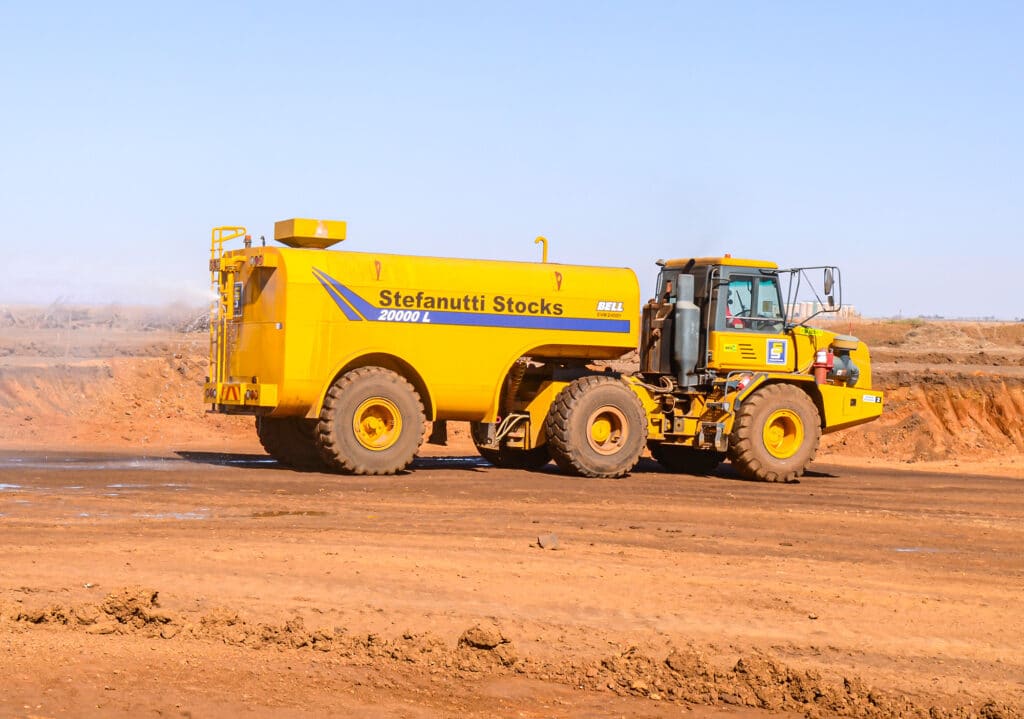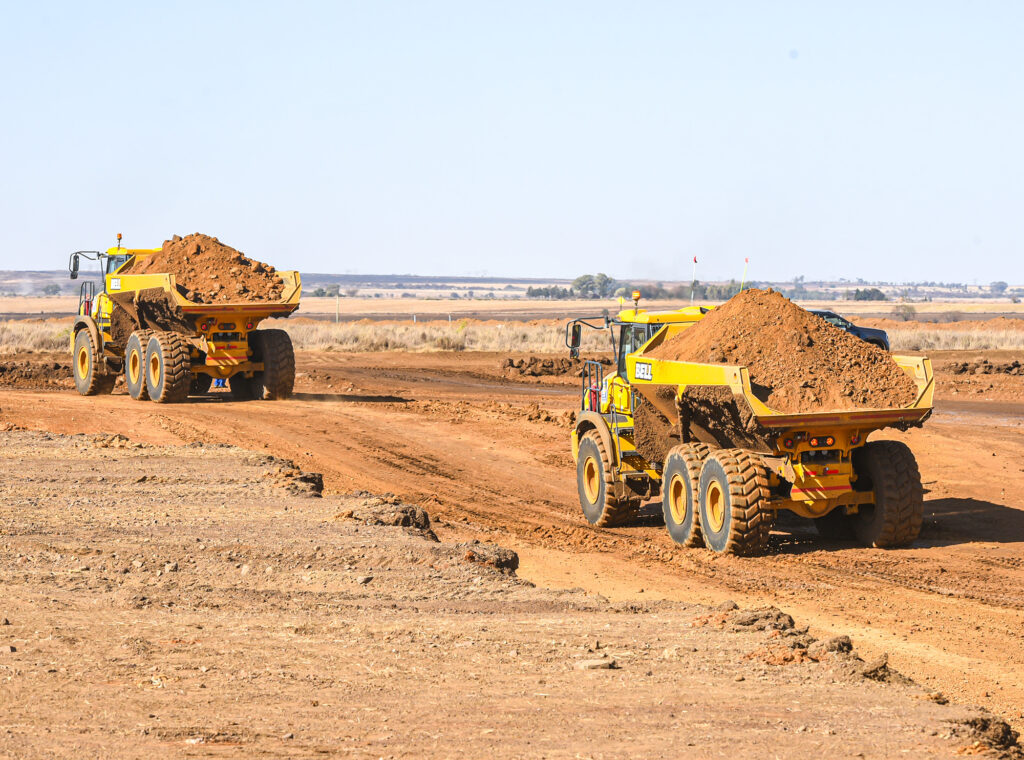A tailings depository, known in the vernacular as a mine dump, is an active dam where the materials left over from the processing of mined ore are stored. These materials can contain ground rock, unrecoverable and uneconomic metals, chemicals, organic matter and effluent from the process used to extract the desired products from the ore.
With strict new environmental regulations in place, a new facility such as this has to be lined with plastic material to stop the seepage of the effluent into the groundwater and to date, this will make it the largest lined depository of its kind in the world. This facility for the tailings of a gold mining company, is being built by Stefanutti Stocks and is situated near Fochville on Gauteng’s western border with the North West Province.
Nigel Ramiah, Stefanutti Stocks’ Group Plant Director, tells us more about this mammoth project. “To fully grasp the enormity of this project, one needs to look at the numbers, which in themselves are daunting,” he says when we meet on the site of the project which bears the remains of the last maize crop. “We need to dig down into the earth to create a box-cut and from this we’ll move 10 million cubic metres of soil that will be broken up into 6,5 million cubic metres of fill material, 1,5 million cubic metres of cut material with 2 million cubic metres of topsoil that will first be stripped off and stockpiled for later use.”
“To do this, we’ll need at least 65 articulated dump trucks (ADTs) and, as we don’t own that many ourselves, we’ll be hiring in a substantial number. What we do have though is a new fleet of Bell B30E ADTs that we started compiling in late 2023 while tasked with a project on a platinum mine in Limpopo. The initial six Bell B30E ADTs have now grown to number 24 with eight machines delivered during July 2024 and another 10 in August 2024,” he says. “We chose the Bell B30E ADT as it’s a proven and reliable ADT designed and built for South African conditions. Bell Equipment’s large footprint ensures we can rely on the company’s technical back-up wherever we work across Southern Africa.”
We wanted to know why his company did not consider larger ADTs such as the Bell B40E or B50E models to which Nigel replied that Stefanutti Stocks is essentially a construction company. To buy such larger ADTs would see the company move into the mining space, which would not be ideal as the new fleet of Bell B30E ADTs will still be utilised for future construction projects beyond the three-year contract period of the present tailings dam project.
“When deciding on an ADT model, we contacted Chris Botha, Bell Equipment’s experienced sales representative who has been our solid link to the company for many years now. We believe in standardising on one model, in this case the Bell B30E ADT, which makes the maintenance of such a fleet that much simpler in terms of ordering parts and having our own maintenance staff being familiar with the brand and model,” he adds. “We’ve been very pleased with the performance of our Bell B30E ADTs as the even torque distribution across the three axles delivers enough power under big loads and this further extends tyre life as there is little or no scuffing on the centre axle’s tyres.”
“We’re also confident that when the spring and summer rains arrive, our Bell ADTs will perform well in the wet thanks to their all-wheel drive traction.”
Current operations see the project teams working six days a week and haul distances for the Bell B30E ADTs vary between 700m and 3km, depending on what material is being moved. The Bell ADTs are loaded by 36-ton excavators and each ADT will carry between five and six loads per hour, which translates into 1 000m³ or 1 600 tonnes per shift. The soil conditions are generally soft with some ferrocrete, but no blasting is required for the excavations.
The tailings depository has been designed with earthen walls which will be 100m wide at the base with an initial height of 10m. As deposits continue over time, the walls are raised by mining contractors responsible for the tailings management.
The Bell B30E ADTs have been bought with extended warranties covering the wet drivetrain and hydraulics for 6 000 hours or 36 months, which also includes a Bell Care Package for the same period. During the warranty period, all servicing and repairs are done by personnel from Bell Equipment’s largest branch at Jet Park in Boksburg.
“We’re running on wet rates meaning we supply the diesel ourselves, so the Bell B30E ADTs’ fuel consumption is important to us,” Nigel continues. “The average fuel consumption that we’re able to get from Bell Equipment’s Fleetm@tic® telematics shows 12,9 litres per hour and coupled to general mechanical availabilities of 91% across the fleet, we’re confident that our choice of ADT for this and other projects has been correct.”
Stefanutti Stocks is very aware of its social responsibilities as it adheres to localised job creation by sourcing the bulk of its ADT drivers and machine operators from communities close to the project site. Training is also given which upskills the community for when the project ends.
Products from Bell Equipment enjoy a major presence on the site with a wide range of ADT models spanning 18-ton, 25-ton and 30-ton dotting the landscape in addition to Bell B2306D and B2806D Articulated Haulers and an assortment of Bell Water Tankers.

